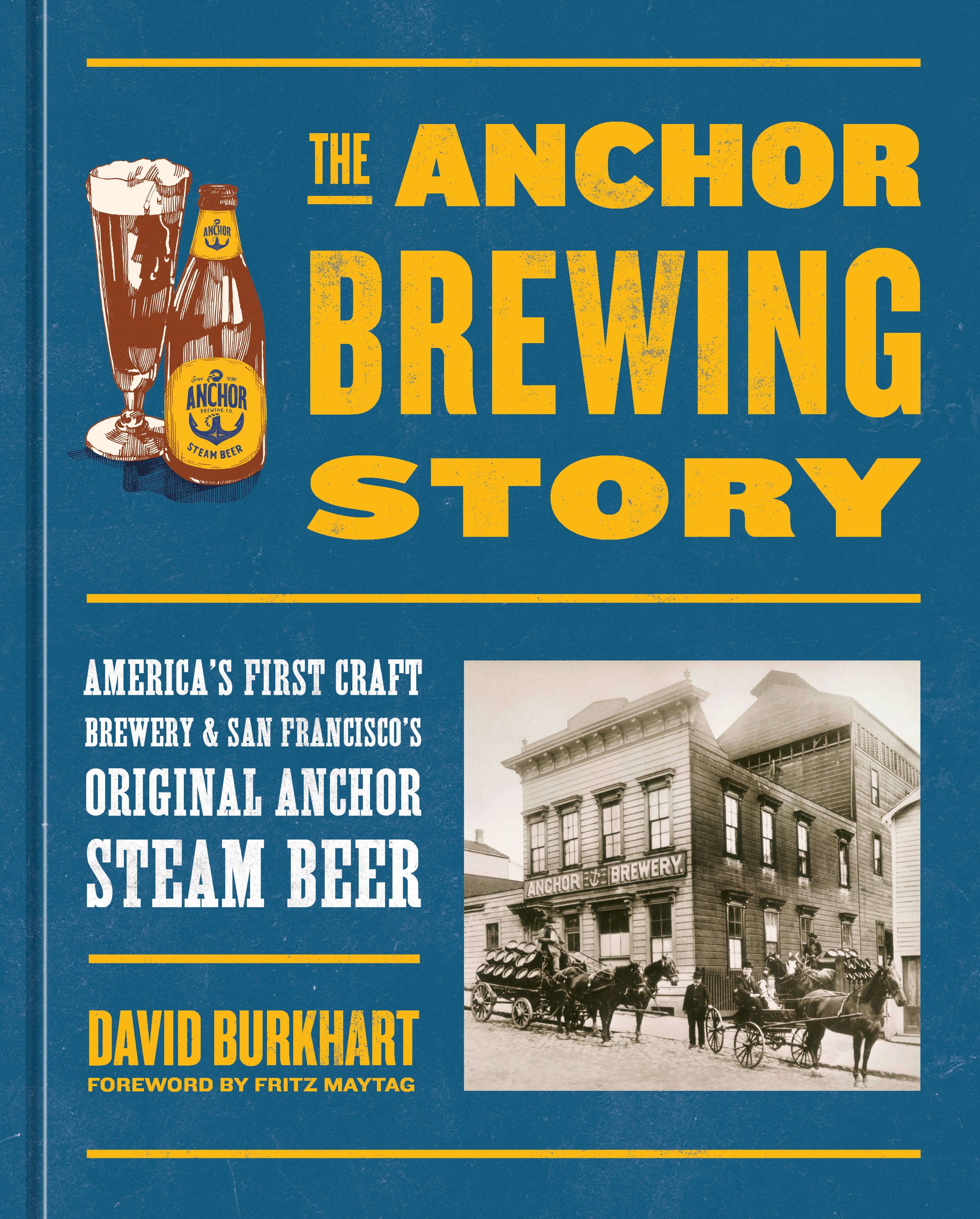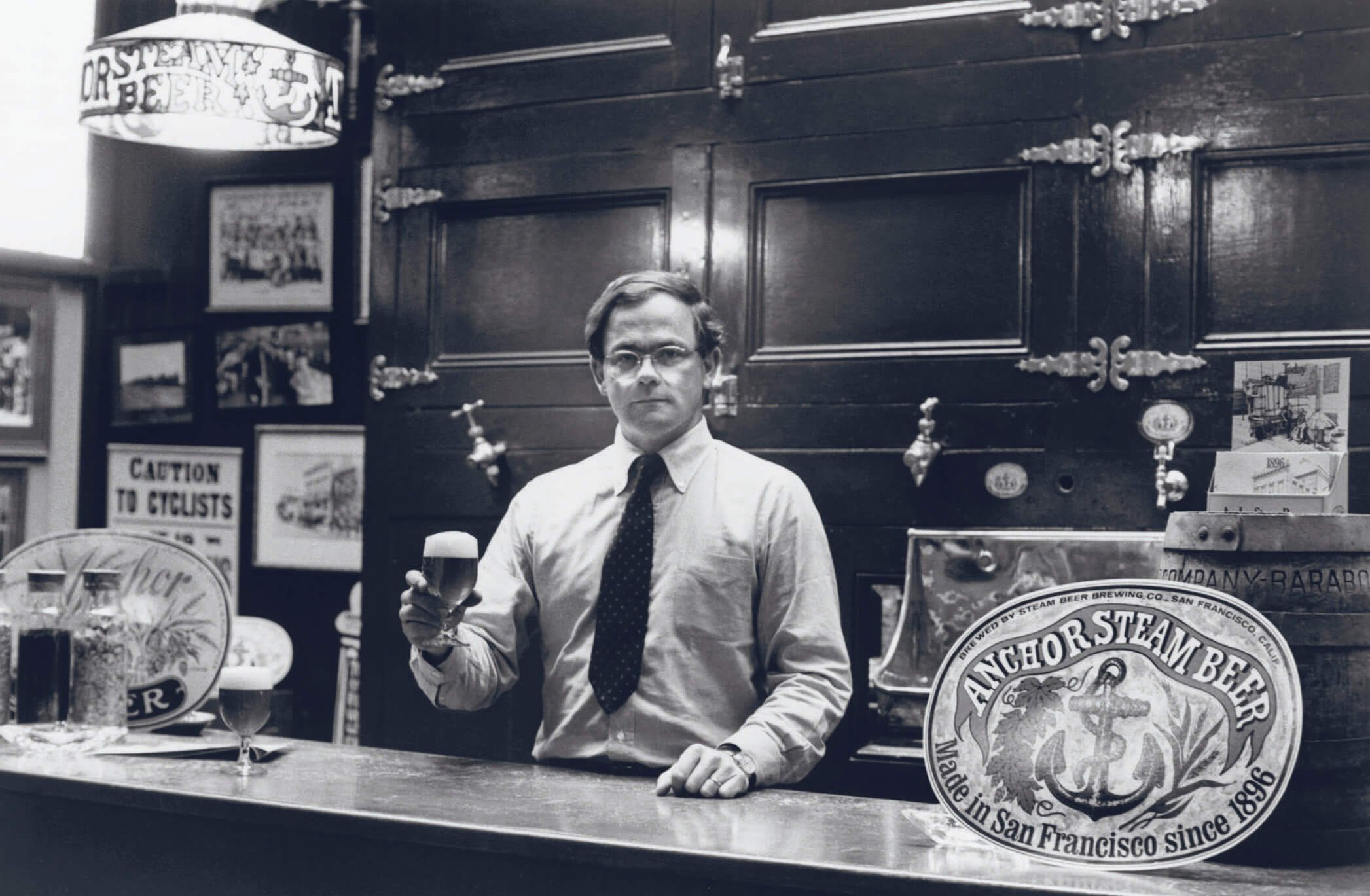Boozy Book Review: The Anchor Brewing Story
As the modern craft brewing and distilling industries mature, it has been refreshing to see their histories being documented at length in a few recent books, especially as many of the original founders have reached retirement age. That is the case of Anchor Brewing, the San Francisco brewery rescued from closure by Fritz Maytag in 1965 and operated by him until 2010. Maytag sold it to a company that in turn sold it to Japanese beer giant Sapporo in 2017.
In The Anchor Brewing Story: America's First Craft Brewery & San Francisco's Original Anchor Steam Beer, long-time Anchor employee David Burkhart covers the 125-year history of the brewery—and that of it in the decades before it was renamed Anchor in 1896.
Steamy Origins
In its early years, the brewery survived the 1906 earthquake and fire, another fire, US Prohibition, competition from breweries with improved technology (like refrigeration), and many sales and financial misfortunes. The history of the brewery provides a window into the history of San Francisco—and the book should appeal to readers interested in the history of the city or of the craft brewing movement.
David Burkhart
Burkhart’s historical scholarship is excellent, and the text is supplemented throughout with newspaper reports on what made the brewery unique. Even in olden times, writers marveled at the old-time processes used to make the “steam beer.” It was already an old-style brewery by the year 1900, and for another 50 years or so it kept getting older as the technology of other companies surpassed it.
The term “steam beer” refers to a category once known as California Common beer: beer that was often called lager though it wasn’t, brewed with a yeast that evolved to make lager style beer at warmer ale-like temperatures. Lager beers were the popular style in the mid-1800s, but San Francisco did not have access to the ice needed to cool the hot wort quickly before fermentation. The famously foggy town did have cool ambient temperatures though, so the beer was passed through a shallow open pan called a coolship that allowed it to cool off naturally. The resulting “steam” produced during this process is one of the four possible explanations Burkhart lays out as to how steam beer got its name.
For a while, the only lager-style beers made in California were steam beers, until a brewery opened in Truckee closer to snowy Lake Tahoe in 1875 that was able to harvest ice from its logging pond and make a true lager. But Anchor Brewing largely resisted change even when technology became available. The beer was produced before and after Prohibition (1920-1933) by the same brewmaster, who made the same kind of beer. A few other breweries made steam beer after Prohibition, but by the late 1930s, Anchor was the only remaining steam beer brewery in the world. (Today, the company owns the term to ensure it stays that way.)
Into the Modern Era
The Anchor Brewing Story_Page 132 photo courtesy David Burkhart/Anchor Brewing Company
By the 1950s and 1960s, Americans drank almost nothing but light lagers made by the big companies that are still around today, and the quirky regional steam beer made by Anchor seemed not long for this world. In 1965, then-young Fritz Maytag (great-grandson of the founder of Maytag washing machines) learned of the brewery’s impending closure from a bartender who knew that he favored the brand. The next morning Maytag visited the brewery and bought it that very day.
From then until the brewery’s sale in 2010, the story of Anchor Brewing (and later Anchor Distilling) is the story of Fritz Maytag’s brewery. The book includes crucial commentary from Maytag throughout, so we learn just what he was thinking when he made each decision. We learn that though the beer brand was iconic in San Francisco, it wasn’t very well made. Maytag had to learn modern brewing practices to ensure cleanliness and consistency in the brewery. The equipment to make the beer received many upgrades over the years (and it wouldn’t be accurate to claim the beer was made the same way as during the Gold Rush), but in the modern era when most beers were full of adjuncts and additives, Maytag kept the recipe to only barley malt, yeast, and hops.
The brewery released many styles of beer that are common today but were not made in the United States until they were made at Anchor Brewing. The produced what they say was the only real porter in the world in 1972 (most other dark beers were merely colored with caramel), and the first wheat beer made in America since Prohibition in 1984, for example.
Maytag also founded Anchor Distilling in 1993 (though the first products would be released a few years later), making the company a pioneer in that arena as well. The distillery produced 100 percent single malt rye whiskey, at the time the only legal pot distilled whiskey in the US. Then gin, then a genever.
Anchor Brewing and its distillery have been pretty well documented over the years, but this new book is far more detailed, and includes some fun local color and celebrity run-ins (Janis Joplin! Steve Jobs!) along the way. These people are included within the 300 photos in the book, many of them published for the first time. The text also includes homebrew recipes for four of Anchor’s iconic brews, including the steam beer, also published for the first time.
Anchor Brewing, with Fritz Maytag at its helm, was one of the most important and influential small breweries in America. Now as it has passed into new hands and moving in different directions, it seems a good time to reflect on that legacy, and The Anchor Brewing Story gives us the perfect way to do that.



